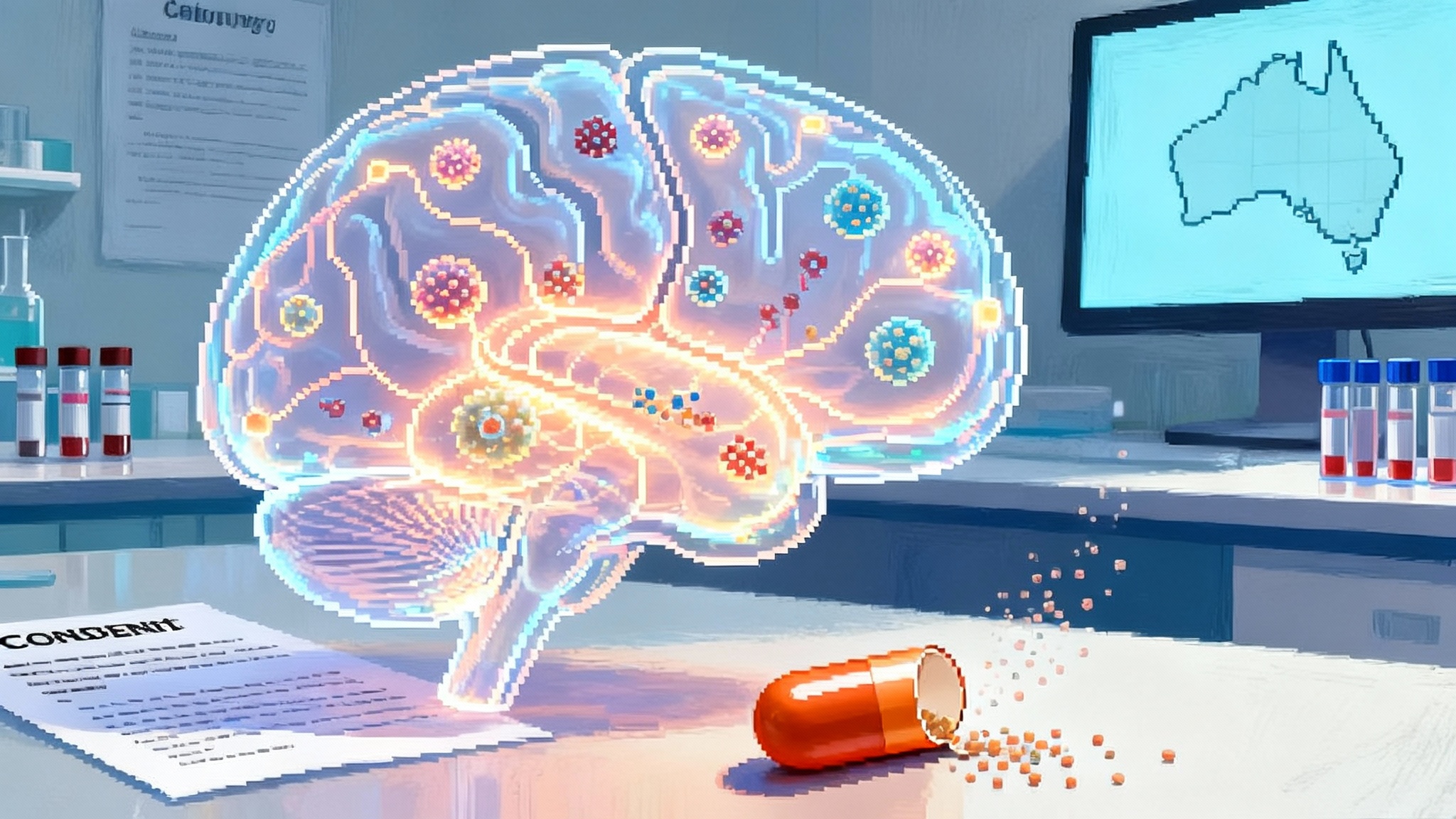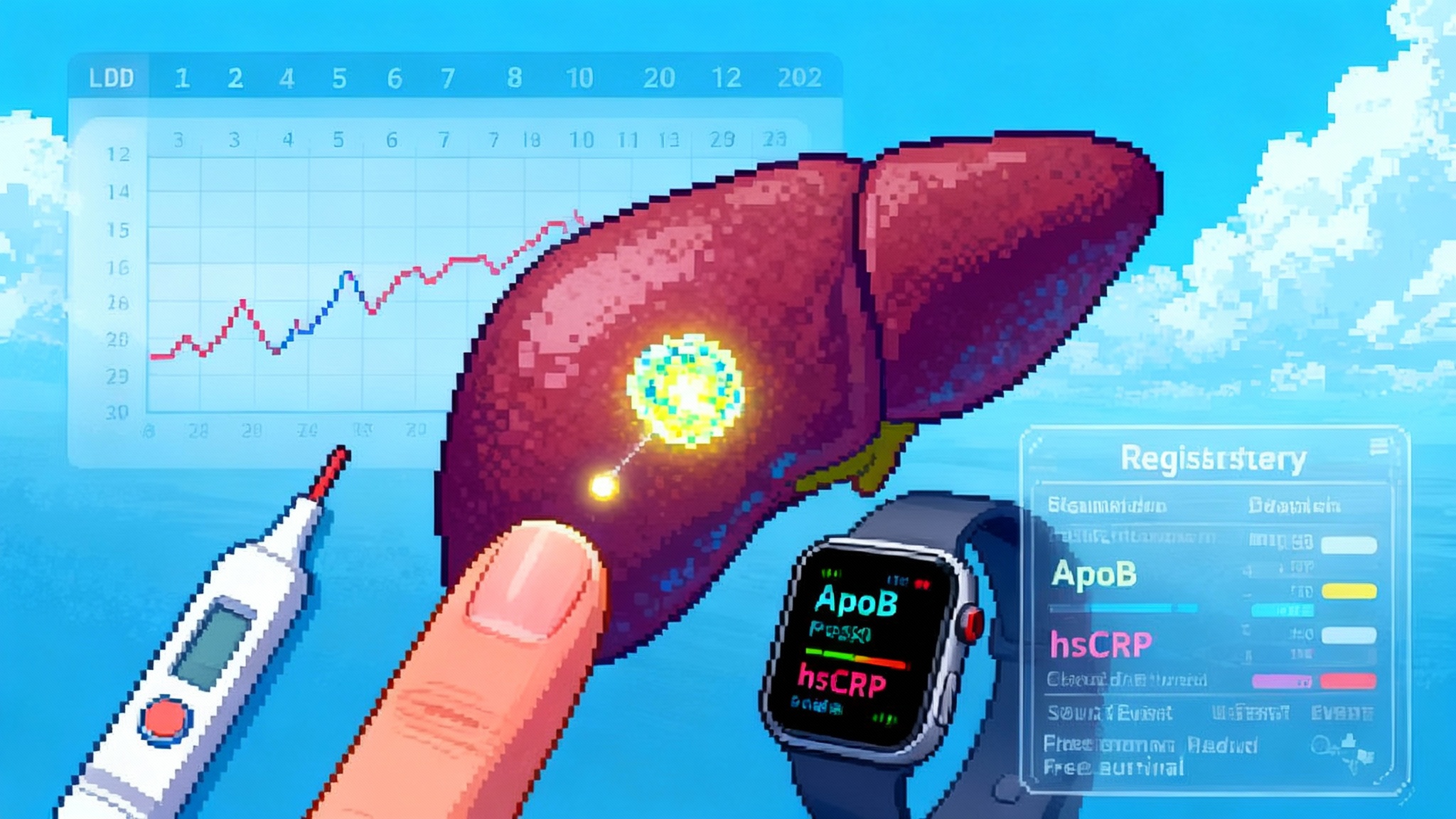Retro's first trial: autophagy pill for Alzheimer's in Australia
On September 14, 2025, Retro Biosciences said its inaugural trial, RTR242, will begin dosing in Australia by year end. Framed as an Alzheimer’s study, the autophagy pill doubles as a longevity play with a regulatory twist.

The Alzheimer’s wedge into human longevity
On September 14, 2025, Retro Biosciences said its first-in-human study, RTR242, will begin dosing in Australia before the end of the year. The company describes the candidate as an autophagy-boosting pill, and it is presenting the program as an Alzheimer’s trial with a broader eye on human longevity. That positioning is not a bait and switch. It is a pragmatic way to validate a core aging mechanism inside a disease label that regulators already understand and that patients and investigators can rally around. As a strategy, it sets up a revealing case study for how longevity R&D could move from vague promises to clinically grounded claims, and how geography can accelerate the path.
Retro did not get here by accident. Longevity companies have learned that the fastest route to human data is to choose a disease where the biology of aging is not just relevant but central. Alzheimer’s disease sits near the top of that list. Neuronal survival, proteostasis, mitochondrial resilience, and neuroinflammation converge on pathways that aging perturbs and that autophagy touches. If you can nudge the brain’s cellular housekeeping to run cleaner and faster, you may not cure Alzheimer’s, but you might slow or alter the course of neurodegeneration in ways that are measurable within a year. That is the bet embedded in RTR242, and it is why the news matters.
Retro’s messaging underscored speed. The company plans to dose by year end, implying that contracts with Australian sites, ethics approvals, and import logistics are either underway or imminent. The country is not incidental. Australia has become a preferred first-in-human destination for U.S. biotechs because of a well-defined ethics-led model that can move from protocol to dosing in weeks, while still producing data that the FDA and EMA will take seriously. Retro’s choice reflects a playbook that has matured over the last decade and is increasingly used by companies who want to test human biology quickly without compromising on quality. The announcement also telegraphs how longevity startups can frame an “anti-aging” mechanism as a disease program without losing the bigger story. Retro is doing exactly that with Alzheimer’s as the wedge. The company announced on September 14 and now has to deliver on the fast start it has promised.
Why autophagy and why now
Autophagy is not new, but it has become newly actionable. The core idea is simple. Cells continuously tag damaged proteins and organelles for recycling, then shuttle those components to lysosomes for degradation and reuse. With age, this housekeeping slows and misfolded or aggregated proteins accumulate. In the brain, those waste products are not just bystanders; they interact with microglia, stress synapses, and impair neuronal function. Alzheimer’s pathology is famously associated with amyloid and tau, but the buildup and clearance machinery is at least as interesting therapeutically.
An autophagy-boosting pill, if safe and brain-penetrant, gives drug developers knobs to turn. You can look at peripheral pharmacodynamic markers of autophagy activation. You can probe lysosomal function and mTOR signaling. You can measure whether downstream neurodegeneration markers move in a favorable direction within months. This is not a silver bullet, but it is a mechanistic lever with a plausible link to both aging and disease.
The timing is also strategic. After a bruising decade, Alzheimer’s therapeutics finally have approvals on the board and a biomarker toolkit that moves faster than cognition alone. That toolkit creates space for mechanism-led programs to show biological effect sizes early. It also gives longevity companies a way to connect mechanistic claims to clinical reality without waiting three or five years.
Regulatory arbitrage, but the constructive kind
Australia’s first-in-human path is a study in incentives. Under the CTN and CTX frameworks, Human Research Ethics Committees review and clear trials, while the Therapeutic Goods Administration is notified and oversees safety and compliance. The result is a system that can start well-run early phase studies sooner and at lower cost than typical U.S. timelines, while generating data that supports downstream FDA interactions. For a company like Retro, that is not about cutting corners. It is about compressing the iteration cycle between hypothesis and human data. The playbook is familiar, and it is rational.
If Retro hits its timing, RTR242 can move from regulatory greenlight to first dose within a short window, with biomarker-rich readouts soon after. That cadence is exactly what longevity R&D needs. The field suffers when programs drift in preclinical limbo and press releases substitute for proof. Australia is not the only answer to that problem, but it is one of the cleaner routes available to scrappy teams who still want rigor. For readers who want the specifics of how the system works, the TGA explains the mechanics in its outline of Australia’s CTN pathway and the related CTX route.
The endpoints that actually matter
A first-in-human Alzheimer’s trial is not expected to change the disease. It is expected to establish safety, pharmacokinetics, and a coherent pharmacodynamic story. The third item is the most interesting, because it is where longevity and disease intersect. If Retro wants to tell a compelling story about autophagy as a lever on aging biology, RTR242 should be designed to do at least four things:
-
Show target engagement and pathway activation. In blood and, if feasible, CSF, the program can measure markers consistent with autophagy activation. That could include changes in the LC3-II to LC3-I ratio in peripheral blood mononuclear cells, reductions in p62 or SQSTM1 accumulation, and downstream shifts in mTOR pathway readouts such as phosphorylated S6K or 4E-BP1. None of these alone prove clinical impact, but together they form a mechanistic fingerprint.
-
Move disease-relevant biomarkers in the right direction. Alzheimer’s now has a validated blood biomarker panel that can detect changes earlier and with far less burden than lumbar puncture. Plasma p-tau217 has become a workhorse. Plasma NfL and GFAP provide complementary windows into axonal injury and astrocytic activation. If an autophagy modulator can nudge any of these toward a healthier profile even modestly over a few months, it supports both the Alzheimer’s claim and the longevity hypothesis.
-
Produce early, sensitive functional signals. Cognitive composites like PACC and tools such as ADAS-Cog13 or CDR-SB are not designed for Phase 1. But exploratory digital cognitive measures, sleep architecture, EEG spectral signatures, and attention or working memory tasks can detect directional changes. They are noisy and must be interpreted cautiously, yet they add texture and plausibility when they line up with biomarkers.
-
Demonstrate brain exposure and structural effects. A brain-penetrant small molecule has an edge. MRI measures like hippocampal volume are slow, but diffusion metrics or functional connectivity can shift earlier. PET is expensive and usually not a Phase 1 staple, but a small amyloid or tau PET substudy could be powerful if the molecule’s mechanism suggests clearance dynamics.
Put differently, the trial should aim to tell a coherent story across levels. Drug is present at the site of action. The autophagy pathway is engaged. Alzheimer’s biomarkers move in a favorable direction. Early functional signals are not inconsistent with the biology. None of that is a label, but it is the kind of integrated evidence that lets a company claim more than safety and hope.
From Alzheimer’s readouts to healthspan claims
How do you translate an Alzheimer’s biomarker win into a broader longevity narrative without hand waving? You do it by measuring aging-relevant endpoints that are not specific to the brain but are sensitive to improved cellular maintenance.
-
Proteostasis and inflammation: Changes in circulating proteomic signatures that reflect systemic stress responses and immune tone are plausible secondary endpoints. If autophagy is doing what it should, low-grade inflammatory markers might trend downward.
-
Mitochondrial efficiency: Peripheral measures of ATP production, oxygen consumption rates in PBMCs, or metabolomic profiles can suggest improved energy homeostasis. These correlate loosely with physiologic resilience.
-
Biological age clocks: DNA methylation clocks and proteomic age scores are imperfect, but in a small, controlled early study they can indicate whether the intervention pushes a system toward a younger state. The claim should be restrained. A shift in a clock is neither a healthspan guarantee nor proof of disease modification, but the direction and magnitude can support mechanism.
-
Physical function: Even in an Alzheimer’s-leaning cohort, simple measures like gait speed or grip strength are quick to collect and anchor the story in the body, not only the brain.
These are not make-or-break endpoints. They are bridges. If RTR242 can move a few of them in synchrony with Alzheimer’s biomarkers, Retro earns the right to explore broader indications such as mild cognitive impairment, Parkinson’s disease, or even non-neurologic conditions where autophagy plausibly matters.
AI-enabled discovery as force multiplier
Retro has been explicit about using AI and automation to compress discovery timelines. In practice, that can mean three things that matter for an autophagy program.
First, target finding and molecule design benefit from models that learn from messy biology. Autophagy is not a single switch. It is a network that touches nutrient sensing, lysosomal biogenesis, and selective cargo recognition. Graph-based models and multimodal embeddings can surface non-obvious targets or chemical series that activate the pathway without the liabilities associated with blunt tools like broad mTOR inhibition.
Second, closed-loop experiments make cycles faster and tighter. Active learning systems can propose molecules or dosing regimens, push them through cell and organoid assays, then update models with the results. That is standard language in 2025, but it matters more when the biology is multi-nodal and the desired pharmacology is balanced rather than binary.
Third, AI helps choose and interpret biomarkers. With Alzheimer’s, the number of potential readouts explodes. Intelligent selection of a small panel that is informative, practical, and aligned with mechanism can make or break an early trial. On the back end, modeling trajectories across participants can extract signals from noise without p-hacking the study to death.
The point is not that AI magically creates drugs. It is that thoughtfully applied machine learning can compress iteration cycles and improve decision quality. If Retro pairs that with disciplined clinical execution, the probability of learning something useful from RTR242 goes up.
Where reprogramming fits next
Retro’s long-term ambitions include cellular reprogramming as a way to reset aging biology. That path remains high risk. Partial reprogramming can rejuvenate cells in vitro and in vivo in preclinical models, but safety and control are the headline challenges. You want to push cells back just enough to restore youthful function without losing identity or triggering tumorigenesis. Small molecules that move upstream processes like autophagy offer a complementary route. They are more tractable in the clinic today and can serve as scaffolding for later, bolder interventions.
If RTR242 shows a clean safety profile and a persuasive biomarker story, Retro will have earned degrees of freedom. It can run a Phase 2 in Alzheimer’s with clinical endpoints. It can test the molecule in other neurodegenerative conditions or in indications like age-related macular degeneration where proteostasis matters. It can also justify continued investment in reprogramming as a downstream, higher-beta bet. The company’s pipeline narrative would then make sense: immediate mechanisms to build credibility and cash flow, while platform bets gestate.
What to watch between now and first data
The company’s claim is to dose before December 31, 2025. Between now and then, a few milestones will signal whether the program is on track and whether the study design is set up to tell a persuasive story.
-
Protocol details and cohort selection: Look for the inclusion criteria. Are participants mild-to-moderate Alzheimer’s, amyloid positive by PET or plasma p-tau, and otherwise stable on background therapy? The tighter the cohort and the clearer the biomarker status at baseline, the more interpretable the signals.
-
Biomarker menu and timing: Which autophagy and Alzheimer’s biomarkers make the cut, and at what cadence will blood or CSF be collected? Expect dense early sampling for PK and PD, then spaced follow-ups out to three or six months.
-
Brain penetration evidence: Even indirect confirmation from PK modeling or preclinical PET data matters. If the molecule struggles to reach the brain, the thesis weakens.
-
Safety profile and drug-drug interactions: An autophagy booster that plays nicely with existing Alzheimer’s therapies and common comedications will be far easier to develop. Watch for any metabolic liabilities or signals of immunosuppression if upstream nutrient sensing pathways are touched.
-
The first look timing: Early PD and safety data could arrive in the first half of 2026. If the trial starts by year end, a small interim could plausibly appear by midyear, even if cognitive readouts wait longer. Manage expectations accordingly. The right outcome for a Phase 1 is not a miracle. It is a clean safety line and a biomarker story that points in one direction.
The bigger picture for longevity R&D
Retro’s move is part of a quiet shift. Longevity companies are pivoting from general promises to disease-specific programs that validate mechanisms while keeping the long game in view. Autophagy, proteostasis, senescence, and mitochondrial function are not slogans anymore. They are trial designs, biomarkers, and dosing schedules.
The geographic arbitrage is real but not cynical. Countries like Australia have learned that high-quality, ethics-led systems can attract early research without lowering standards. In return, startups can convert preclinical ideas into human biology within one planning cycle. The winners in this new rhythm will be teams that measure the right things, interpret them honestly, and iterate fast.
If Retro hits its marks, RTR242 will not just be another Alzheimer’s Phase 1. It could become a template for how to turn a longevity mechanism into a disease program that regulators, clinicians, and patients recognize. And if the data do not cooperate, a clean negative result will still move the field forward by teaching the next set of teams which levers not to pull. Either way, autophagy just stepped out of the aging discourse and into the clinical arena, and that is where the longevity story will be written.

